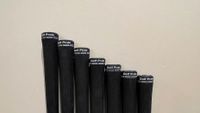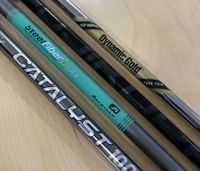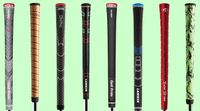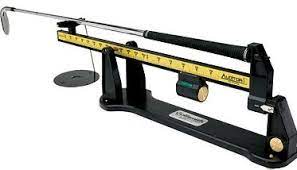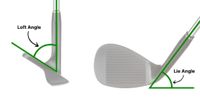CLUBFITTING: more important than you think!!
-- Golf is a game of details --
This also holds true for the clubs we play the game with. To get the maximum performance and enjoyment out of the game, we need to make sure that the clubs we play suit our body and our playing style and ability. A good club-fitter can help you find or build a set of clubs that suits you specifically.
Some of the things we must consider when choosing our clubs are:
Club length:
I believe the correct club-length to suit your body is absolutely paramount in building a set of clubs that works for you. Too many golfers just play with “standard” length, even though there is no such thing as any standardization between the different golf brands. “Standard” is just being used by the manufacturers as something that could be used by many people, without it feeling too off. But it is by no means perfect for most.
What if you are slightly shorter or longer than average? What if your arms are longer than average, compared to your height? Etc...
This is why determining the proper length of your golf-clubs is one of the first specs that we need to determine, and we will take a measurement of your Wrist To Floor distance to get a starting point.
Shaft flex:
“Flex” refers to the amount of bend or stiffness in the shaft of a golf club. The degree of flex is determined by the materials used in the shaft and its construction. A shaft with less stiffness will bend more, or “flex,” during the swing, while a stiffer shaft will not bend as much. The amount of flex in the shaft has a significant impact on the way the club performs, particularly on the distance, accuracy and trajectory of a shot. Golfers with slower swing speeds typically use more flexible shafts to help them achieve a greater distance, while golfers with faster swing speeds use stiffer shafts to maintain control and accuracy.
However its not only about the club-head speed, it is also about how you create that speed.
A golfer with an aggressive transition move from back-swing to downswing often benefits from a slightly stiffer shaft profile than his or her speed numbers would dictate. While a smooth swinger can benefit from a more flexible shaft than the numbers would suggest, to help with their feel and timing.
It is important for golfers to choose the correct shaft flex for their swing to maximize their performance on the course.
From flexible to the most stout we have:
- Ladies Flex or A/Senior Flex (depending on the manufacturer these are often quite similar in stiffness)
- Regular Flex
- Stiff Flex
- X/Extra Stiff Flex
- going up to XXX Flex for the Long Drive competition players
Shaft weight:
The shaft makes up a big portion of the club, therefore choosing the right weight category for it is key in dialing in the best total weight and feel of the club. Of course choosing the right shaft material is part of this decision.
Steel or Graphite:
After the age of hickory golf clubs, shafts have been made out of steel and it is still used today in irons, wedges and putters.
But for the last few decades graphite shafts have positioned themselves as the shafts of the future.
Steel shafts are still used a lot and they do have a couple of things going for them. They are a lot cheaper to make than graphite shafts, and they naturally have a low torque or resistance to twisting. They are also relatively heavy and the weight and low torque aspects make them more suitable to the stronger/faster players. Steel is also good for passing along vibration, giving more feedback in the hands to these stronger players.
Like I mentioned before, graphite is the shaft material of the future. A few years ago it used to be a given that graphite shafts where softer than Steel shafts, mainly due to their naturally higher torque ratings. But because of their lower weight they where readily adopted as the go-to shafts for drivers and woods. Even Tiger Woods, who stubbornly kept playing a steel shaft in his driver for a while, eventually switched to graphite in all his woods.
Graphite shaft technology has come a long way since the beginning though. Nowadays we are able to make graphite shafts just as stiff or low torque or more, than their steel counterparts. And we can make them stiffer than their steel counterparts in the same weight category, because graphite is such a light and versatile material. They are now even made in the higher weight categories, to cater to tour players who prefer a higher shaft weight.
The natural vibration dampening characteristics of graphite make them easy on the joints, and can be a real blessing to players who struggle with injuries. While other players will mis clarity in the feedback they provide. So this comes down to personal preference.
The biggest downside of graphite is that they are more complex and therefore more expensive to make.
Club-head design:
Of course the type of club-heads we choose can make a big impact on our game, as this is the only part of the club that comes in contact with the ball.
Club-heads can be made from a range of materials and have more or less “forgiveness” build in. In general you could say that a higher handicap player could benefit most from a big iron head with a cavity back design that has more mass of the club distributed around the perimeter, making it more forgiving when not struck completely out of the center of the club-face. These club-heads are often made out of cast steel and feature a more offset hosel and wider sole. But there are plenty of high handicappers that would respond better to either a slightly slimmer profile head, a narrower sole or less offset.
Better players often prefer the softer feel and feedback of a forged steel club-head. These can be made in more forgiving cavity back styles or true muscle back blades. The softer steel that is used does mean that these irons have to be checked for loft and lie angles at least once a year, as the can come off their true specs trough use. Especially if you spend a lot of time on the range mats or play in firm course conditions.
Nowadays we also have iron club-heads made out of multiple materials, sometimes featuring a mix of forged face or body, cast steel parts, hollow body construction or a special thin and springy metal for the club-face portion and soft vibration dampening inserts or fillings. A good club-fitter can help you sort through the countless options available.
Grip type and size:
The grip is your only contact with the club you are swinging and should not be overlooked when getting new clubs. Just because you are a lady, doesn't mean that the slim Ladies size grip is right for you.
Golf grips can be made from firm or soft material and in a range of sizes. Even the shape of the grip can be different. We have the traditional tapered golf grips, but for players with bigger hands or players who would like to slow down the closure rate of their clubs, we also have grips with a thicker lower hands portion or “reduced taper”.
Grips can have an alignment “rib”along the back as feedback for your fingers, or can have a simple round profile. For people with arthritic hands, bigger and more profiled grips are much easier to hold in the hands. And don't forget that switching your grip size can have an effect on the weight and balance of the club.
Swing-weight:
Swing-weight is not actually a measurement of weight, but more a measurement of weight balance in the golf club. In general you could say that stronger, faster or more aggressive style swingers could benefit from a higher swing-weight as this will give them a better sense of where the club-head is during the swing.
And slower, less strong or smoother swingers tend to prefer lighter swing-weights and still retain a sense of where the head is in the swing.
Truth be told: not everyone is sensitive to swing-weight
Some players will not react any differently in their swing to even the biggest changes in swing-weights. While for other players even 2 grams more or less in the club-head, can make the difference between a good or a bad swing
Loft and Lie:
For players with an established and fairly repeatable swing, it is also important to consider the Lie angles of the clubs. The lie angle is a measurement of the shaft angle when the club sits with the sole on the ground. Having a lie angle that is too much toe-up or upright can cause the loft of your club to face to the left on impact, causing shots to the left. A lie angle that is too flat or toe-down can cause the loft of the club to face to the right on impact, giving you shots that end up right of your targets. If these lie angles are way off, they can even cause either the toe or the heel of the club to catch in the ground, increasing the deviation even further by jamming the clubface open or closed at impact.
The proper loft progression throughout the set should be used in order to make sure that every club has a proper function and distance associated with them.
Pro clubfitter tip: if for example your 4 iron does not go further then your 5 iron, there might be something wrong with their loft gapping. Or you just don't have enough club-head speed to properly launch the golf ball at the loft on your 4 iron, and will be better served with a hybrid or fairway wood at that loft.
Some videos from our YouTube Channel about clubfitting:
MMT Putter Concept shaft review
What is the best grip for you?
